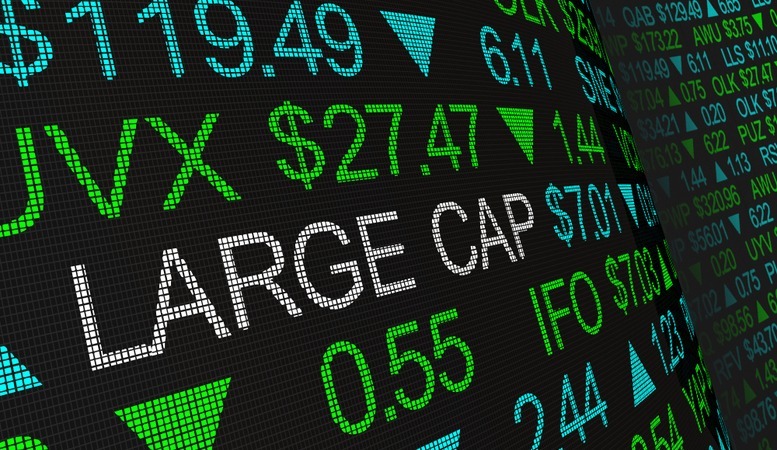Table of Contents
Should the gold market cap be a crucial factor in your precious metal investment choices? Precious metals like gold and silver provide extensive benefits for commodities investors, but it is not only attractive as a hedge against inflation. The market capitalization of your chosen commodity also brings certain risks and rewards with it as you survey the bigger picture.
The gold market cap dictates many external factors that can affect your investment:
- It changes the sentiment of fellow investors.
- It measures whether gold is still in demand or going through a dip.
- It provides a mathematical framework for wise investment decisions to know whether another type of investment could serve the portfolio better.
Most people are aware that gold is a popular investment for risk-averse investors, and it features in a wide range of settings. For example, millions of investors take out gold IRAs as a safe and attractive way to save for a comfortable retirement. Many financial advisors also tell their clients to apportion at least 10% of an investment portfolio to gold to counteract inflation and other market risks.
Below, Oxford Gold Group explores why the gold market cap matters to potential investors and how to make the most of it.
What is “Market Cap?”
The market capitalization of a commodity, company, or industry is the total current value of it on the open market. Investing is like placing a bet in a card game, and the market capitalization is the handle.
Other investment options do not share the same benefits as precious metals, including volatile stocks like crypto coins and unreliable fiat currency from central banks. Commodities like oil also carry much more risk as renewable energy takes center stage. Gold’s impressive market capitalization over the years is part of its stability in the face of geopolitical turmoil and the laws of supply and demand, and it remains an excellent investment choice globally.
Who Decides the Market Cap of an Industry or Company?
According to the World Gold Council, about 300 gold mining companies operate worldwide. However, only a third of these companies are big enough to list publicly, and only five make it to the Forbes Global 2000. If you are planning to invest in an unlisted gold mining company, it is complicated to determine its potential market capitalization.
Without an Initial Public Offering (IPO), the investor cannot know how many assets the mining company has or calculate a potential return on investment. Investing in privately held companies involves more homework than issuing trades on the stock market, and transparency is an important factor in the value that investors attribute to an entity. Once that company makes an IPO, it bares its list of assets and consents to public scrutiny.
An investment bank may perform various audits and evaluations to determine the company’s initial stock price and advise them on how many shares they should sell. The company’s market capitalization will also change as its operation grows and the trading price fluctuates. The gold market cap does not have the same limitations as these vulnerable share prices that are so sensitive to the rise and fall of investor sentiment.
A Real-World Example of Market Capitalization
The most basic method of solving for market capitalization is multiplying a company’s share price with its shares outstanding. Let’s work backward with one of the largest mining companies in the world, BHP Billiton. If its market cap is around $138 billion, and shares are selling at $36 each, dividing the market cap by the share price gives around 3.8 billion shares that its investors can buy and sell on the stock market.
It is a little more challenging sizing up an entire industry like gold mining, but the approach remains the same. For other gold acquisition companies like Royal Gold, Inc, the market cap can confirm its impressive worth on the open market. Market cap embodies the company’s competitive edge and provides peace of mind that fellow investors agree about the potential value of your investment choice.
The Gold Market Cap
When you consider the above-ground gold reserves that BHP Billiton, Royal Gold, and thousands of other gold industry players hold, the numbers are staggering. Recent data from the World Gold Council revealed 197,500 metric tons of above-ground gold reserves in circulation. If you combine that with central banks’ precious metal holdings worldwide, the total gold market cap sits at around $11.389 trillion.
Central banks are the leading buyers of gold worldwide because economies are too large to predict or control. Gold is the only commodity that doesn’t show signs of debasement, even during the worst financial crises. In fact, around 35,000 metric tons of the world’s 197,500 above-ground gold stash sits in reserves like the United States Bullion Depository in Fort Knox and the New York Federal Reserve.
Unsurprisingly, The United States has the world’s largest gold reserves with over 8,100 metric tons of gold bullion in public and IRS-approved depositories (nearly triple Germany’s gold holdings as the second country on the World Gold Council’s list).
The Role of Market Capitalization in Your Investment Decisions

Gold is a perfect investment vehicle for both cautious risk-takers and savvy venture capitalists. Those looking to safeguard a nest egg cannot afford to see a part of their portfolio depreciate from market pressures or currency devaluation. Most of these investors already have high-risk holdings for commodities such as NFTs and cryptocurrencies but would like more balance.
A Straightforward Risk Assessment
Calculating the current gold market cap is the most straightforward way of determining the risk you’re about to accept by buying gold. Gold is a large-cap commodity that is always in demand, so it’s unlikely to fail or experience devaluation as time goes by.
Large-Cap, Mid-Cap, and Small-Cap Gold Companies
When you’re familiar with calculating the market cap of commodities, it will be easier to weigh the value of the companies that create and sell these investment vehicles. You can also compute these companies’ shares in the global arena for a sense of how close they are to cornering their markets.
Large-Cap Gold Investments
Investing in large-cap gold mining companies means putting money in the capable hands of people with more than $10 billion of value creation under their belts. There are excellent mid to long-term returns involved, and you can pass on stocks as an inheritance to your dependents.
Canadian reserves are nowhere near the top of the World Gold Council’s list, but this country dominates the large-cap mining space with three of the largest gold mining companies worldwide: Barrick, Franco-Nevada, and Agnico-Eagle. The total market cap of these three companies alone is over $20 billion, and they all operate from Canada.
Mid-Cap Gold Investments
Mid-cap gold companies have a market cap of up to $10 billion, and Canadian miners also dominate this space. Their operations continue to expand in Brazil, Chile, and the Middle East, including gold mining companies like Endeavour Mining, Centerra, and Yamana. Mid-cap companies are not as established as larger operations, but investors tend to place confidence in the growth potential on display.
Small-Cap Gold Investments
Small-cap gold companies are young and adventurous, often employing unconventional business techniques or mining concepts to give themselves an edge. These stock prices are volatile but hold unique potential to provide immense returns. Only 1% to 2% of these small-cap companies level up, and there is always the potential to become one of these lucky investors.
Market Capitalizations vs. Market Value
Confusing market capitalization for market value is a common mistake, but market capitalization only represents the assets of a company, not its liabilities. Credit-rating agencies like Moody’s and Standard & Poor’s provide investment banks with data on which companies have sufficient assets to cover the debt they hold. They look at metrics that can affect market value, including:
- Macroeconomic trends
- Historical performance
- Price-to-earnings or Price-to-sales ratio
- Debt load
New precious metals investors in gold mining companies can learn important information from scouring the gold market cap figures. However, it is only part of the picture.
The Gold Price-BTC Price Debate

In 2021, the U.S. inflation rate for consumer-priced goods rose to a whopping 5.4%, the highest level since the 1980s. People who are looking for ways to store and save the fruits of their labor have no doubt heard about Bitcoin (BTC) and the crypto exchange. Billionaire hedge fund manager Paul Tudor Jones puts Bitcoin as the cryptocurrency equivalent of gold, and even governments are thinking about it as a global reserve asset.
Gold gives lower yields than this digital asset, and JPMorgan has even suggested that Bitcoin might rival gold as a hedge against inflation, but only if it becomes less volatile over time. Bitcoin had a $1 trillion market cap by 2021, but the gold market cap is eleven times the size of Bitcoin. It will be interesting to see how Bitcoin’s digital hedge plays out compared to physical bullion, but we have a feeling that gold will hold its own; it has for millennia.
Learn More about Gold with Oxford Gold Group
Oxford Gold Group’s experts offer professional advice and invaluable support on these types of decisions. Ask us anything, from gold market cap calculation details to ways to store the gold you are going to acquire. The enduring gold market cap still makes this precious metal one of the safest investments available.
Contact Oxford Gold Group at 833-600-GOLD to learn more about the gold market cap and how to use it to your advantage.








